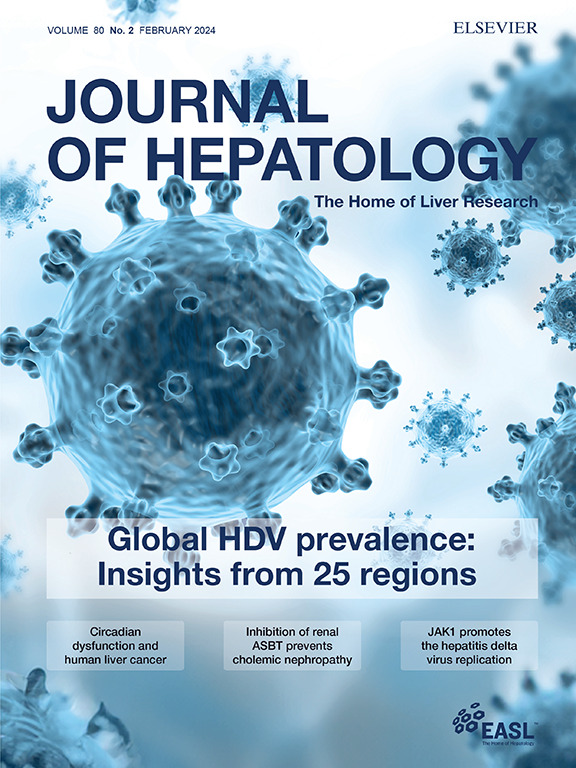Simultaneous liver transplant and sleeve gastrectomy provides durable weight loss, improves metabolic syndrome and reduces allograft steatosis
IF 26.8
1区 医学
Q1 GASTROENTEROLOGY & HEPATOLOGY
引用次数: 0
Abstract
Background and Aims
The prevalence of obesity and metabolic syndrome (MetS) is rising among liver transplant (LT) candidates, many of whom have Metabolic-Associated Steatotic Liver Disease (MASLD). Following LT, untreated obesity often causes recurrent MASLD. We treated patients with obesity with LT and concurrent sleeve gastrectomy (LTSG), aiming to determine long-term impact on obesity, MetS and recurrent MASLD after transplantation.Methods
A multicenter retrospective cohort study analyzed patients undergoing LTSG using a single clinical protocol (n=72), and patients with BMI >30 who underwent LT alone for MASLD (n=185). Follow-up duration was 4-153 (median 41) months for LTSG and 12-161 (median 75) months for LT. Outcomes included mortality, graft loss, BMI, MetS components, allograft steatosis and fibrosis.Results
Mortality and graft loss were not significantly different between LT and LTSG patients. Post-LTSG patients had significantly lower prevalence of diabetes for >8 years (p<0.05); hypertension decreased from 61.1% to 35.8% (p<0.01). LTSG patients, with average starting BMI of 45.5, had significant weight loss compared to baseline for >9 years (p<0.001). LT-alone patients, average starting BMI 34.0, experienced no significant change in BMI or diabetes. Development of allograft steatosis was significantly lower in LTSG vs LT patients (p=0.004). Fibrosis prevalence was reduced in LTSG vs LT patients 3-10 years postoperatively; although not statically significant, relative risk ratio was 0.46 (p=0.09). One LTSG patient had a gastric sleeve leak; one required hiatal hernia repair. Severe GERD occurred in 11.1% of LTSG patients; risk factors included pre-existing diabetes and GERD.Conclusions
LTSG results in sustained weight loss, resolution of diabetes and hypertension, and reduced recurrence of steatosis and possibly fibrosis compared to LT alone. It confers no increase in mortality or graft loss.

求助全文
约1分钟内获得全文
求助全文
来源期刊

Journal of Hepatology
医学-胃肠肝病学
CiteScore
46.10
自引率
4.30%
发文量
2325
审稿时长
30 days
期刊介绍:
The Journal of Hepatology is the official publication of the European Association for the Study of the Liver (EASL). It is dedicated to presenting clinical and basic research in the field of hepatology through original papers, reviews, case reports, and letters to the Editor. The Journal is published in English and may consider supplements that pass an editorial review.
 求助内容:
求助内容: 应助结果提醒方式:
应助结果提醒方式:


